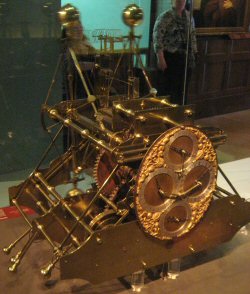Fil:H1 low 250.jpg
H1_low_250.jpg (250 × 294 pixlar, filstorlek: 81 kbyte, MIME-typ: image/jpeg)
Filhistorik
Klicka på ett datum/klockslag för att se filen som den såg ut då.
| Datum/Tid | Miniatyrbild | Dimensioner | Användare | Kommentar | |
|---|---|---|---|---|---|
| nuvarande | 24 februari 2011 kl. 20.55 |  | 250 × 294 (81 kbyte) | Phantom Photographer | {{Information |Description ={{en|1=Photograph of John Harrison's H1 clock. Low resolution for illustrative purposes only, and to discourage potential commercial use.}} |Source ={{own}} |Author =[[User:Phantom Photographer|Phantom Ph |
Filanvändning
Följande sida använder den här filen:
Global filanvändning
Följande andra wikier använder denna fil:
- Användande på bn.wikipedia.org
- Användande på ca.wikipedia.org
- Användande på cs.wikipedia.org
- Användande på de.wikipedia.org
- Användande på en.wikipedia.org
- Användande på eo.wikipedia.org
- Användande på es.wikipedia.org
- Användande på eu.wikipedia.org
- Användande på fi.wikipedia.org
- Användande på fr.wikipedia.org
- Användande på gl.wikipedia.org
- Användande på he.wikipedia.org
- Användande på hr.wikipedia.org
- Användande på hu.wikipedia.org
- Användande på it.wikipedia.org
- Användande på ja.wikipedia.org
- Användande på no.wikipedia.org
- Användande på uk.wikipedia.org
- Användande på zh.wikipedia.org

